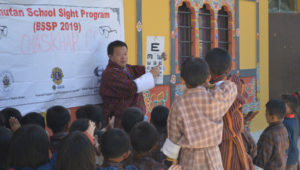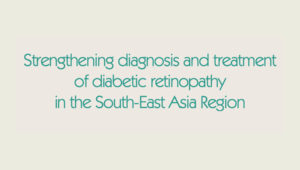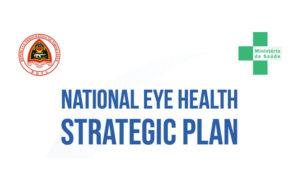Join the Leading Global Eye Health Alliance.
Membership-
Choose an alternate language here
The year 2020 was a crucial year for all eye health stakeholders, marking the end of VISION 2020: The Right to Sight and end of WHO Global Action Plan 2014-2019.
In 2020, we had plans to launch the World Report on Vision (WRV) in 10 countries of the SEA region focusing our advocacy actions towards:
However, COVID-19 turned everything on its head. Our work went virtual, and training now happened on webinars. However, we continue to work on setting the context for effective implementation of plans for next year such as generating evidence, sharing knowledge and protocol development, which will ultimately be useful to tackle increasing backlog of people requiring eye care services and the challenges in the year to come.
Some major highlights of the region for 2020 are as follows:
The Ministry of Health Bangladesh in collaboration with IAPB, WHO, IAPB members and national stakeholders on eye health conducted a national launch of WRV to operationalize its recommendations. In SEA, Bangladesh is the first WRV launch conducted on 19 and 20 January 2020. During the launch the Health Minister of Bangladesh committed to allocate adequate resources to strengthen primary eye care by addition of 500 vision centre in near future. Following the launch, a workshop was organized to prepare the national strategic eye health plan of Bangladesh in line to recommendation of WRV.
As physical meetings and international travel was restricted, that gave us spare time to work on write ups and publication of evidences generated from our last year’s work in the region. We were able to publish the following:




Myanmar is the second country in the WHO South East Asia Region to achieve elimination and the 10th country to achieve elimination globally, following Cambodia, China, Ghana, the Islamic Republic of Iran, Lao People’s Democratic Republic, Mexico, Morocco, Nepal, Oman
The announcement follows annual period prevalence data from 2010 to 2015 showing that active trachoma in children under 10 years of age across all the regions and states in Myanmar ranged from 0% to 0.0537%, which is below the WHO threshold of less than 5% of trachomatous inflammation follicular in children aged 1–9 years. Surveillance has also confirmed that levels of trachomatous trichiasis, the late blinding stage of trachoma, are below the WHO threshold of less than 0.2%.
In the year 2021, we plan to launch WRV in the remaining nine countries: Bhutan, India, Indonesia, Maldives, Myanmar, Nepal, Sri Lanka, Thailand and Timor-Leste. We also plan to initiate implementation of WHO tools such as ECSAT in some countries in 2021. A regional meeting has also been planned to monitor the WRV launch and rolling out of IPCEC in national level eye health policy and plan. We hope 2021 will be a better year for eye health work in the region.